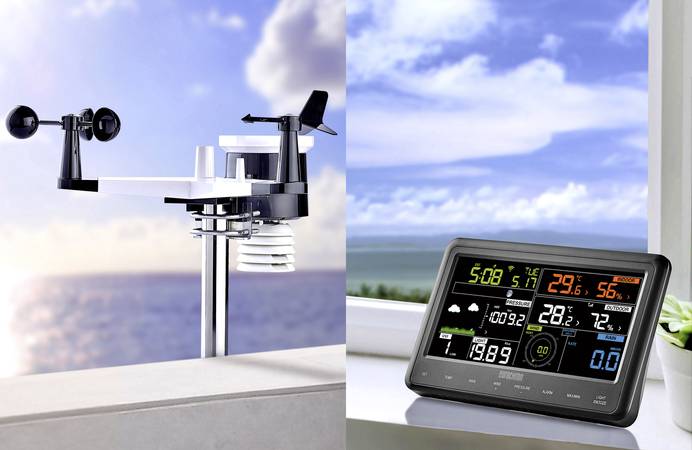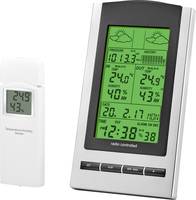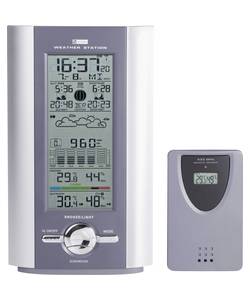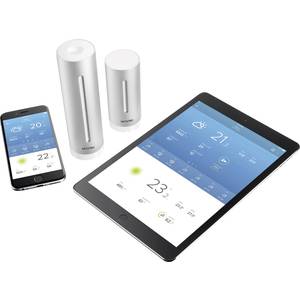Current offers
Guide
This text is machine translated.
Weather stations combine different measuring instruments for meteorological applications. They are as popular with amateur meteorologists as they are with commercial users, for example in agriculture. The individual models and designs differ considerably in some cases: Digital weather stations are superior to analogueue weather stations in many functions.
Our guide explains what was to be observed when selecting a weather station.
Weather stations collect different meteorological data. These are physical measures that have an impact on our daily lives.
- The temperature, measured with a thermometer, says how it stands for the air temperature.
- The air humidity is determined with a hygrometer and indicates the water content of the air. Together with the temperature, this has an influence on the (room) climate.
- The air pressure, measured with a barometer, enables weather forecasts such as the probability of precipitation.
Weather stations with extended functions also have measuring devices such as:
- Anemometer as wind gauge
- Sensors for air pollution CO2-content
Digital weather station
Digital weather stations are electronic devices with various sensors for determining the weather. Their great advantage lies in the possibilities for data transmission via radio. The data of a wireless weather station determined by several sensors and measuring locations can be compiled in one display. By the integration of external data from official weather services, larger forecast periods are possible.
Analogue weather station
Analogue weather stations are stationary measuring devices with mechanical components. The display is similar to a round scale. An analogueue weather station is usually used as a combination of thermometer, hygrometer and barometer for determining temperature, air humidity and air pressure. Contrary to the trend toward digitization, analogueue weather stations are currently experiencing their renaissance as a design object.
| Analogue weather station | Digital weather station | |
|---|---|---|
| Design of the devices | + robust design thanks to purely mechanical components | - it is often a base station for indoor operation and associated outdoor sensors as well as outdoor measuring devices |
| + generally weather-resistant and suitable for outdoor use | - the electronic components are sometimes sensitive | |
| Power Supply | + does not require a power supply | - At least one battery supply is required for the electrical devices |
| + thus can be used anywhere | ||
| Number of measuring stations | - Only one device at a time, not linkable | + Sets with several weather sensors available for different locations |
| Display | - Reading required directly on site | + Remote reading of the measured values possible through radio transmission |
| - on a mechanical scale | + Data from several measuring sites can be compiled on a display | |
| Data transfer | - no data transmission and further processing possible | + Data transfer possible, for example as a wireless weather station with outdoor temperature sensor or via app |
| + External data can be included in weather forecasts | ||
| Interpretation of the measured data/weather forecast | - Interpretation of the measurement results requires knowledge of meteorological relationships | + Various auxiliary functions are available for the interpretation of the measurements, e.g. the display of weather forecast pictograms |
| Expandability | - not expandable | + Depending on the model, it is possible to connect additional sensors and measuring devices |
Weather stations: Measurement functions and data transfer
Analogueue weather stations are not network-compatible and collect your data only at the installation location. The reading also only works stationary, since the mechanical display does not allow data to be transferred to another location for evaluation. Here, digital weather stations are clearly superior.
Info: In private weather stations for everyday use, the measurement functions for temperature and humidity are mostly in the foreground. A thermo-hygrometer is required as a measuring device. This is available in both analogueue and digital. Indoor/outdoor thermometers as combination devices must be digital, however, because only with electronic data transmission can a wireless outdoor sensor be integrated.
Depending on the model, digital weather stations offer:
- Multiple measuring locations through networked sensors
- Processing of weather data for example for weather forecasts
- Forwarding of weather data either to a base station with color display or via app to an external device such as a smartphone or tablet
- Integration of external data to increase the reliability of weather analyzes
- Meaningful display with information, for example, about the probability of precipitation, sunrise and sunset, moon phases and other events (via external data)
- Alarm function as a warning against weather events such as frost and storm
- Usually also a radio controlled clock with timer
For advanced digital models, interfaces for connecting additional measuring instruments are possible. For example, you can connect a wind or rain gauge as additional measuring devices.
A distinction must be made between the following types of transmission for the weather data:
- Wireless transmission within a closed system by wireless weather stations as a set with a base station and any other sensors such as wireless thermometers for outdoor use
- Satellite-supported data transmission for feeding external data for weather information, weather forecasts and automatic time synchronization.
- Data transfer via the Internet with a WLAN weather station enables a variety of data analysis and further processing, for example via cloud connection or app for the smart home area.
- Combinations of these transmission paths are possible. For example, a wireless weather station can collect data on site with several measuring devices and also receive satellite information for extended weather forecasts. Similarly, in the event of problems with the Internet, a WLAN weather station may use satellite data for its local display.
WLAN weather stations enable the integration of the weather station into your home network via WLAN. This networking enables remote access to your weather data via app while traveling. In addition, WLAN weather stations can be integrated in smart home controls and also enable the computer-supported evaluation of the measured data, for example for statistics.
Note: When selecting a weather station to connect to smart home solutions such as smart heating controls, be sure to be compatible with your existing system. The weather stations are also competing with the major cloud providers Google, Apple and Amazon with their respective software.
Tip: Conrad Connect offers an all-round smart home solution for many different types of devices from the weather station to the automatic door closing system. Our app for smart home installation is partly compatible with the cloud solutions of the major providers





